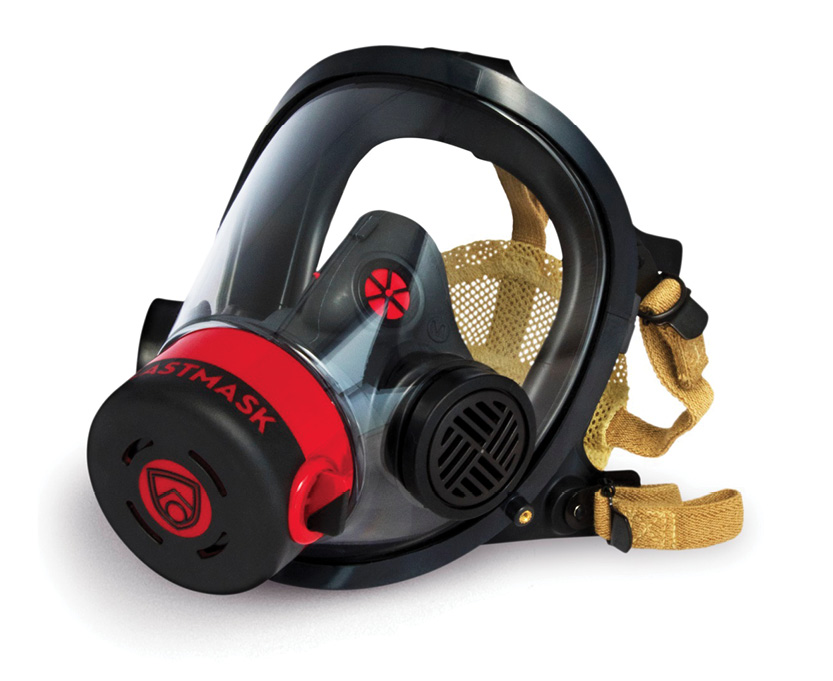
technology today ❘ By JUSTIN C. DICKSTEIN
The Garland (TX) Fire Department’s Station 2 has earned the nickname “Protectors of the Powder Keg” because we cover most of Garland’s large industrial and manufacturing base. To live up to that nickname, we must be prepared for anything and constantly train to be effective. We take pride not only in being able to cover disaster scenarios but also in being aggressive interior firefighters. This led us to train regularly in our self-contained breathing apparatus (SCBA) on air at Station 2. And, even in our comparatively large metro department, which has several cascade systems, we were told that we were using too many cylinders and refilling them was taking too long. Our desire to train drove us to create a solution—a training regulator we call the Breathing Limited Air Situational Training Mask (BlastMask®).
The BlastMask is a training regulator engineered to simulate the sensation of breathing on air in SCBA. It is designed to function as closely to the actual regulator as possible and includes features such as spring latches and an easy air bypass valve. The bypass valve was created to operate the same way on the BlastMask as it does on the SCBA model for which it is designed to fit; it is also on the same side and turns in the same direction to make it as true to life as possible. This way, training in a BlastMask helps develop the same muscle memory a firefighter needs when operating in his own SCBA.
Through repetition, these movements are available to firefighters subconsciously when they are needed most. The BlastMask is not a substitute for training on air; it is a supplement that allows firefighters more time in their masks. It also allows for more repetitions in less time without waiting to refill cylinders. With it, firefighters can train realistically anytime and anywhere outside of immediately dangerous to life or health (IDLH) environments.
In addition to allowing for more frequent training, the BlastMask adds a realistic, firefighter-specific component to functional fitness. It is well known that the consistent number-one killer of firefighters is stress-induced sudden cardiac arrest from overexertion. If your department does not have an active fitness program and is not championing firefighter health and wellness, this needs to change immediately.

(1) Photo courtesy of author.
There are simple things that can be done to reduce the number of firefighters who die in the line of duty every year by addressing preventable risk factors. Is every member of your department or station physically prepared for the extreme physiological demands of firefighting? Clinical research has shown that the best indicator of cardiorespiratory endurance and maximum volume of oxygen (VO2max) that can be used during exhaustive exercise is lowered by 14.9 percent by wearing an SCBA.
Every firefighter knows intuitively that it is more difficult to work in full gear. However, it is striking that the regulator alone, with no weight from an SCBA pack, is responsible for a 13.1 percent drop in VO2max. This is a very specific and significant physiological effect that you must train to overcome. This means training on air or using a training regulator like the BlastMask as part of your functional fitness routine. Firefighters who train with the BlastMask consistently report better air management when they are back in their SCBA.
Another advantage of using BlastMask is that it conditions firefighters psychologically to work in their visual environment and get used to being uncomfortable in their equipment. It is one thing to be out of breath after a run on the treadmill; it is another to be out of breath after carrying a high-rise pack up flights of stairs and trying to catch your breath through an SCBA as you advance an attack line down the hallway. The psychological aspect of that sensation will only reinforce the physiological effects of an increased respiratory rate and pulse. It is much more difficult to catch your breath when you feel like you cannot catch your breath. That is why the BlastMask is designed to attach to the face piece your department uses—to give firefighters more experience looking through a scratched-up, obscured lens and to have their faces, noses, and mouths covered by their SCBA nose cup. We must teach firefighters to deal with a fogging face piece, to consciously get control of their breathing, and to take off their mask to get a breath. Firefighters must deal with all these factors regularly outside of an IDLH environment to know exactly how they will react and operate effectively inside the IDLH environment.
Along with the obvious benefits of providing firefighters increased training and time in their equipment, the BlastMask benefits departments’ budgets. Departments everywhere are being asked to do more with less. Using the BlastMask supplements training without taking any equipment out of service, reduces wear and tear on much more expensive equipment, and saves resources for when they are really needed. Paid, volunteer, military, and industrial fire departments and fire academies across North America have discovered how the BlastMask can help them have better trained, more physically fit, ready-to-respond firefighters—all while saving valuable resources.
JUSTIN C. DICKSTEIN is a captain in the Garland (TX) Fire Department. He has been a frontline officer in responses to both an ISIS-inspired terrorist attack and an EF4 tornado. He has BA and MS degrees from the University of Texas—Austin. He is a co-author of The Station-Ready Rookie (Fire Engineering, 2015) and the creator of the BlastMask® training regulator.

